Here’s my next Decoded article, addressing some of the common code requirements for hotels and other residential occupancies. This post will be published in the November 2018 issue of Door Security + Safety
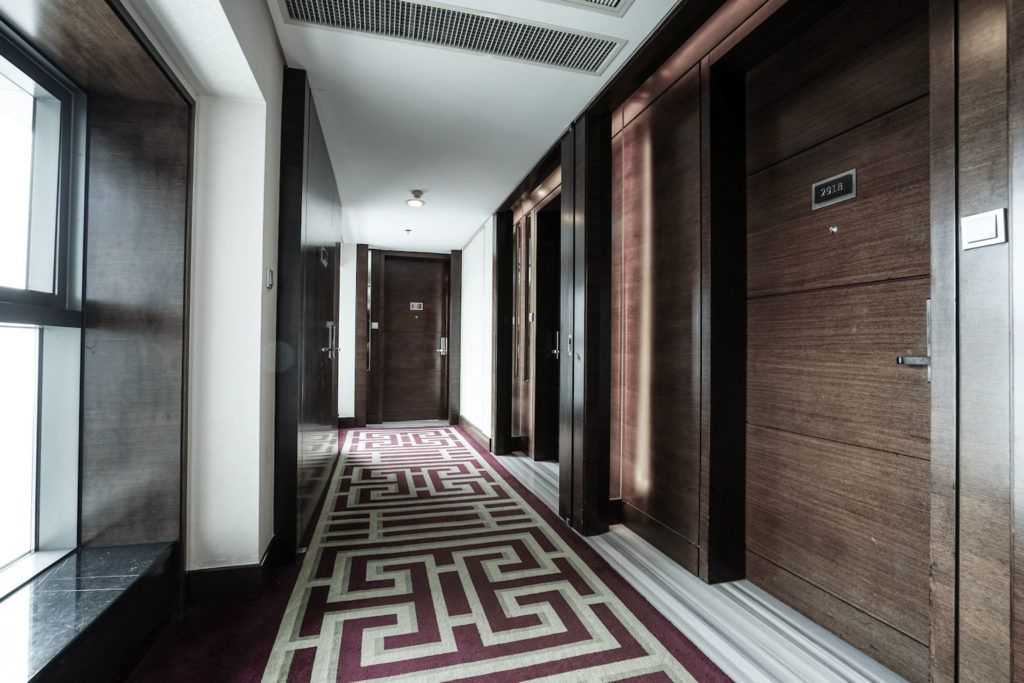 Many of us travel for business or pleasure, and along the way we may notice door-related code issues in the hotels we pass through. Often, the code requirements for hotels are consistent with other types of residential occupancies such as apartment buildings and dormitories. The International Building Code (IBC) classifies all of these buildings as Residential Group R; hotels are Group R-1 – occupants are mostly transient, and apartment buildings and dormitories are Group R-2 – occupants are mostly permanent/non-transient.
Many of us travel for business or pleasure, and along the way we may notice door-related code issues in the hotels we pass through. Often, the code requirements for hotels are consistent with other types of residential occupancies such as apartment buildings and dormitories. The International Building Code (IBC) classifies all of these buildings as Residential Group R; hotels are Group R-1 – occupants are mostly transient, and apartment buildings and dormitories are Group R-2 – occupants are mostly permanent/non-transient.
When staying in a hotel it’s very important to report any deficiencies noted, and some hotel chains are particularly open to receiving this feedback. A few years ago I reported a problem fairly late at night when I checked in, and the person responsible for fire and life safety for the entire hotel brand contacted me before I checked out the next morning. I like that kind of attention to safety!
Here’s a summary of some of the basic code requirements that apply to door openings in hotels and other residential occupancies:
- Exterior Entrances – Generally, all doors that are part of a means of egress must unlatch with one operation (refer to the exception for dwelling/sleeping units below). These doors must also be operable from the egress side without a key, tool, special knowledge or effort, and with no tight grasping, pinching, or twisting of the wrist. Releasing hardware must be mounted between 34 inches and 48 inches above the floor (or as required by the state or local jurisdiction). Although the accessibility standards don’t set an opening force limit for exterior doors, the IBC limits the opening force to 15 pounds to release the latch, 30 pounds to set the door in motion, and 15 pounds to open the door to the fully-open position. Some state codes have adopted more stringent opening-force limits for exterior doors. The closing speed for all manually-operated doors on an accessible route must be at least 5 seconds to close the door from an option position of 90 degrees to 12 degrees. Automatic doors must meet the requirements of BHMA A156.19 – Power Assist & Low Energy Power Operated Doors, or BHMA A156.10 – Power Operated Pedestrian Doors.
- Ballrooms and Other Assembly Spaces – Doors serving assembly occupancies with an occupant load of 50 people or more may not have a lock or latch unless it is panic hardware (or fire exit hardware if the door is fire rated). The requirement for panic hardware applies to all doors in the egress path leading from the assembly space to the public way. Technically, egress doors serving floors with only hotel rooms or apartments are not required to have panic hardware if they are not part of the egress path from an assembly space, although some facilities prefer panic hardware for ease of use and durability.
- Swimming Pools – Depending on the occupant load of the pool area, many swimming pool enclosures require panic hardware on the egress doors serving the space. Most swimming pool enclosures are also required to limit access to prevent unaccompanied children from accessing the swimming pool. This requires doors and gates to either be self-closing, self-latching, and automatically locked on the access side, or for access hardware to be mounted at 54 inches above the floor or ground.
- Stairwell Doors – It’s not uncommon to see stairwell doors that do not close and latch properly in hotels and apartment buildings. In most cases, these doors are required to be fire door assemblies, so the doors must close and latch to protect the means of egress. NFPA 80 – Standard for Fire Doors and Other Opening Protectives, also requires limited clearance around the door, and hardware and glazing that is listed for use as part of a fire door assembly. When stair doors are lockable on the stair side to prevent access from one floor to another, the doors are required to unlock if a fire occurs, to allow building occupants to leave the stair if it becomes compromised by smoke.
- Dwelling Units and Sleeping Units – Doors leading from interior corridors to these units are typically required to have a 20-minute fire rating, which means that they are designed and tested to deter the spread of smoke and flames for at least 20 minutes. These doors are required to close and latch reliably, and to meet all of the requirements of NFPA 80. Although spring hinges are not prohibited, they may not close the door reliably over time, and may need frequent adjustment. Excessive clearance is a common problem with unit entrance doors, as well as damaged or missing gasketing. While past codes may not have required gasketing, the IBC requires corridor doors to have limited airflow, and perimeter gasketing is usually required to minimize the airflow to the required level. In most jurisdictions, entrance doors to units with an occupant load of 10 people or less are allowed to have a deadbolt or other security device in addition to the latching hardware, as long as the security device does not require a key or tool to operate from the egress side.
- Communicating Doors – When two hotel rooms are connected by a door opening, a communicating door is typically used. This is actually two doors swinging in opposite directions, installed in the same frame. The assembly is required to be fire rated, in order to maintain the fire separation between the rooms when the rooms are occupied by two different parties. When both adjoining rooms are rented by the same group – for example, a family – the fire separation between the rooms is not required. Because of this, there is an exception that allows the door closers to be omitted from these doors, even though fire doors are typically required to be self-closing or automatic-closing. Communicating doors are required to have positive-latching hardware, so a latchset or exit lock is typically provided on each door leaf along with a deadbolt with a thumbturn on the room side.
- Service Rooms and Areas – Doors serving rooms and corridors used by staff, including storage areas, may have been modified for convenience or may become damaged due to cart traffic or abuse. It’s critical to maintain these doors in code-compliant condition; many of them are fire door assemblies, egress doors, and/or located on an accessible route. The egress path must be kept clear of stored materials, so the means of egress can be used by building occupants during an emergency.
- Inspections and Maintenance – The fire codes adopted in most US states require fire door assemblies to be maintained in accordance with NFPA 80. Since the 2007 edition of this standard, NFPA 80 has required fire door assemblies to be inspected annually, as part of the maintenance procedures. Even if a jurisdiction is not enforcing the inspection requirements, it is still the responsibility of the building owner or property manager to ensure that all of the fire door assemblies are in code-compliant condition; any damaged components or deficiencies must be repaired without delay.
Because a good portion of the building occupants’ time in a residential occupancy is spent sleeping, and because some transient occupants may not be familiar with the egress routes, it’s crucial for doors to be in working order so they will function properly during an emergency. Most doors are required for egress and must meet the applicable egress requirements. Many doors in residential occupancies are also required to be fire door assemblies to help slow the spread of fire and protect the egress paths. In addition, the accessibility standards typically apply to common area doors and unit entry doors, as well as the doors within some of the units. Complying with all of these requirements may seem difficult, but this compliance helps to ensure the safety of all guests and residents.
Photo: shutterstock/August_0802
You need to login or register to bookmark/favorite this content.

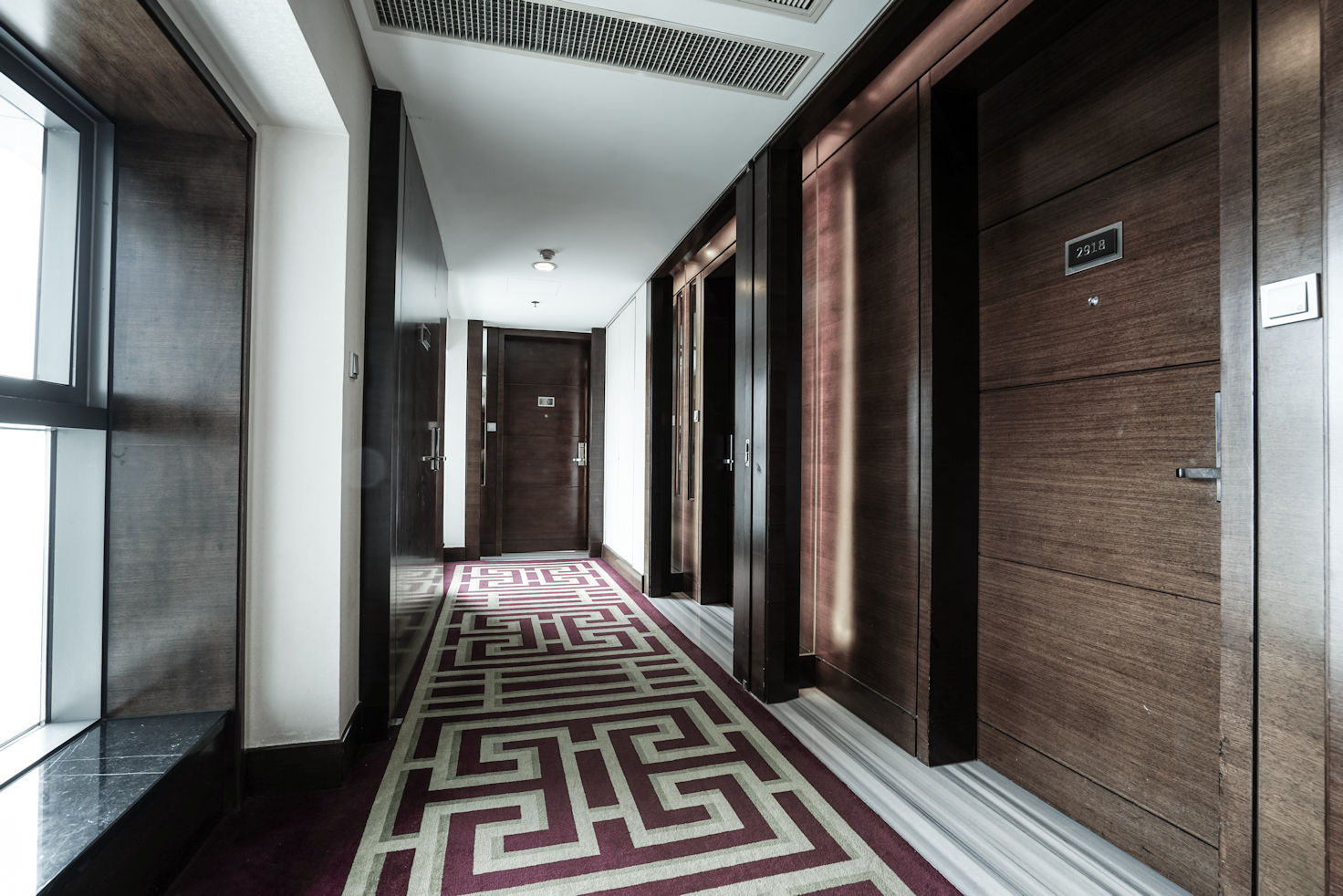

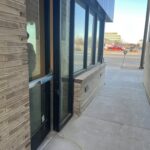

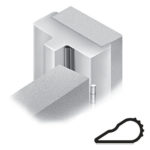
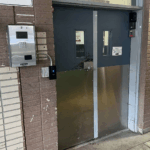
Could you expand on this and describe the communicating doors. I understand they have to be Fire Rated but do not have to be self closing.
Good point! I will add a section on that.
– Lori
My understanding is that just 1 door needs to be rated along with the frame, correct?
Hi Randy –
That depends on who you ask. I would rather see both doors rated because a) what if the rated door is opened by the tenants, leaving the opening not protected even though the non-rated door is closed, and b) the price differential is not worth the risk. In a test condition, 1 rated door would be sufficient, because both doors are closed during the test. But there is no guarantee that’s how it will be during an actual fire.
– Lori
Hi Lori. I am still fuzzy on an issue with panic hardware. I understand that rooms that are group A occupancy with 50 or more people need panic hardware. You noted that “The requirement for panic hardware applies to all doors in the egress path leading from the assembly space to the public way.” This may make sense but the building code does not directly state this. The building code says: “1008.1.10 Panic and fire exit hardware. Doors serving a Group H occupancy and doors serving rooms or spaces with an occupant load of 50 or more in a Group A or E occupancy shall not be provided with a latch or lock unless it is panic hardware or fire exit hardware.” So if you have a mixed-use building like an office building (B occupancy with a meeting room that has over 50 occupants, the meeting room would need panic hardware since it would be an A occupancy. Once a person leaves the meeting room and enters the rest of the building they are in the B occupancy and panic hardware is not required in a B occupancy. Do you know of any official interpretation that would address this issue? Thanks, Karl.
Hi Karl –
Panic hardware is required for the doors within the means of egress (i.e. “doors serving rooms or spaces…”) – not just the first door in the means of egress, but the whole egress path. This is not true of electrical rooms with panic hardware, but with the large meeting room you referenced, the doors serving that room would include the meeting room door, any cross-corridor or stair doors that you would pass through while exiting, as well as the exterior and vestibule doors. All of those would require panic hardware if they have a lock or latch.
The IBC Commentary says: Doors that are part of a means of egress from the locations listed in this section shall not be provided with a latch or lock other than panic hardware or fire exit hardware unless one of the two exceptions is met. For all doors that provide means of egress for
rooms and spaces of assembly and educational (Group A and E) occupancies with an occupant load of 50 or more, if latching (or locking) hardware is installed, it must be panic hardware or fire exit hardware. This would include large assembly spaces in mixed-use buildings.
It’s not completely clear in the Commentary, I guess, but what would be the point of releasing 500 people from a ballroom through doors with panic hardware if they can’t continue along the egress path through doors with panic hardware?
– Lori
Thanks Lori. I agree that it makes sense to provide all doors along the path of egress with panic hardware. To me it is not very clear based on how the code is written.
It’s all based on the premise that the doors serving a particular area are all of the doors between the space and the public way. It goes back to the definition of the means of egress and the 3 parts – exit access, exit, and exit discharge.
– Lori
In an ICC publication entitled “2009 IBC Questions and Answers” (which is out of print), a similar question is asked and the ICC staff opinion is:
Question: When a panic bar is required on the egress door from an electrical room, must every sub sequent door outside this electrical room leading to an exit discharge have panic hardware as well? The code doesn’t state that every door thereafter must be equipped with a panic device. I’d argue, no, because once the electrical room is evacuated, the safety risk has been reduced. Furthermore, panic devices are otherwise only required when the conditions of an A, E and some H occupancies with loads greater than 50 are present.
Answer: There are two different circumstances where panic hardware is required. These requirements are expressed in two different paragraphs of
Section 1008.1 .10. The first indicates that each room or space classified as a Group A or E occupancy with an occupant load of 50 be provided with panic hard ware. For these occupancies, the code requires each door in the egress path of travel to have panic hard ware. The second requirement is specific to electrical rooms. This requirement only applies to electrical rooms and does not apply to the rest of the path of
egress travel. [10-54]
Thanks Paul!
– Lori
Nice Job Lori! Keep up the GREAT job of keeping us trained!!
Thanks Kevin! I’m trying! 🙂
– Lori
I may be a little confused, but would it not be possible to have a meeting room of over 50 occupants that would not require the doors be fire rated? Thus, the doors may not be required to have any latching mechanism? This explains the “shall not be provided with a latch or lock unless it is panic hardware or fire exit hardware”? If this is possible, then is there another number for aggregate total occupants before the rest of the doors within a MOE are required to be panic/fire exit hardware? Of maybe this is a case where IBC/BOCA is more stringent than NFPA (allows up to OL=100 before panic/fire exit hardware).
Hi Adam –
Yes, you could have a meeting room with >50 occupants that does not have fire door assemblies, so the meeting-room doors could have push/pull hardware and would not require panic hardware if there was no need to lock them. BUT…let’s say you have a meeting room with an occupant load of 50, and the meeting-room doors don’t need to be lockable but the exterior doors further on down the means of egress do need to lock. The exterior doors, as well as any cross-corridor doors or stair doors that someone would pass through on their way out of the meeting room, would need panic hardware if they had a lock or latch. And yes, the IBC is more stringent than NFPA 101 – panics for 50 occupants in Assembly/Educational, where 101 requires panics for those occupancies with a load of 100.
– Lori
Is it a Louisiana state code/statute that interior hotel stairwell doors remain closed at all times? We keep ours closed but guests tend to prop them open and I would like to post signs stating “per Fire Marshal the doors must remain closed”. Is that ok to do?
Hi Claire –
Almost all stairwell doors are fire doors, so they either have to be self-closing, or they need to be held open in a way that they will automatically close when there is a fire. Posting signs on the doors is fine, as long as the total signage on the door is less than 5% of the face of the door, and the signs are not attached with mechanical fasteners like screws or nails (use adhesive or double-sided tape).
– Lori
I just recently purchase a property with 10 cabins on it. We use them as short term rentals. Looking to change over from traditional keyed locks to smarts locks. touch pad. Are there any concerns or issue you are aware of I should know about? Any recommendations for smart locks? We have used August at our other properties, but not in love with them. Thank
Hi Dean –
Of course I am partial to Schlage locks since I work for Allegion. 🙂 The only issue I can think of is if the cabins are unheated when unoccupied and you’re in a cold area, it could affect battery life.
– Lori
I work at a hotel with a three room suite that have a patio door that has a dead bolt and latch but both open when inside handle is turned, but the outside stays locked at all times. The management want to install second locking device on these door to ensure customers security, is this wrong to do since it is a means of egress out of the building? If so what is the code to show them?
Hi Adam –
Are you sure this is a required means of egress?
– Lori
I arrived at a local hotel for a 2 day stay. After checking in I found that there was only one working door for a 61 unit, 2 story hotel without an elevator. The only working door had a sign posted inside stating the back door was broken. Did I have a legitimate reason to refuse the room and request a refund? I decided to leave and find another hotel.
Hi Mary –
In my opinion, yes, but I don’t know if there is legal precedent or not. You could have called the local fire department to report it and officially established the problem if you were trying to get a refund. I’m sure the hotel manager would have responded to that!
– Lori
Hi Lori,
Regarding dwelling units and sleeping units specifically. What type of scenario would require a rating other than 20 minutes?
That’s a good question…I have rarely seen a rating other than 20 minutes, but one possibility would be if the dwelling unit opened directly to an exit stairwell. Or possibly if the corridor wall is load-bearing? This article is about load-bearing walls WITHIN dwelling units but it has the IBC excerpt: https://idighardware.com/2017/06/qq-fire-doors-at-load-bearing-walls/. Basically, it’s if the wall has a higher rating that what is normally required – that would prompt the need for the fire door assembly to have a higher rating.
– Lori
Hotel Basement Maintenance room (electric boilers, Hvac) – is there a requirement for a fire door there? if so then 20 min?
Hi Martin –
I can’t say for sure – there are a lot of factors that go into which doors need to be fire rated.
– Lori
Recently I stayed in a older one-story motor-court style motel in Bend, Oregon with room entry doors exiting directly to the outdoors; wooden door frames. There was a keyed knob lock with 1/2 inch spring latch, and a separate 1 inch deadbolt – however, the deadbolt had a double-cylinder: only a key can be used to lock it and unlock it from the inside and outside. The room key furnished to me only operated the knob lock. The deadbolt was unlocked at all times, and motel staff indicated there was just a master key for the deadbolt; no key would be provided to a motel guest. there was no security latch chain or rim bolt.
I have two questions: 1) I felt nervous that no deadbolt was provided for the occupant’s use, as the 1/2″ spring latch in the wimpy wood frame would be relatively easy to defeat. I know in Seattle that the building code requires all residential units to have a 1″ deadbolt, I believe with a turn button on the inside. Is a 1″ deadbolt required in Oregon (perhaps by the building code or other state law) as well?
2) It seems to me the double cylinder deadbolt on room doors (a) should be illegal because it could be used by an unscrupulous key holder to hold a person prisoner in the room (for example, in a human trafficking situation) as well as the more obvious concern that if it was somehow locked and a fire or other emergency occurred, it would limit egress (there were a couple of small single-hung windows in the same wall as the door, one with an in-window air conditioner blocking its opening; I’m not sure if I, a 5’9″ 200-pound man, could fit through the opening of the other window.) Is this in fact illegal?
I mentioned to motel staff that this might be a legal requirement and they said “it’s always been that way” but the deadbolts were obviously less than 10 years old; and when I mentioned that I stayed in this motel about 15 years ago, was told that that was longer than they had been at this motel. Thanks for your answers.
Hi Guy –
I know that some jurisdictions do require a secondary lock or security device for dwelling units and sleeping units, but it’s not a requirement of the model codes. I spoke with Joe Cross, my coworker in Oregon, and he did not know of a local requirement.
Regarding the double-cylinder lock, that is definitely not allowed on the egress door serving a dwelling or sleeping unit. In addition to the requirement for doors to be operable for egress without a key, tool, special knowledge, or effort, here is a specific reference to dwelling units and sleeping units: Doors from individual dwelling or sleeping units of Group R occupancies having an occupant load of 10 or less are permitted to be equipped with a night latch, dead bolt or security chain, provided such devices are openable from the inside without the use of a key or tool.
I hope this answers your questions.
– Lori
This article is not helpful for my problem what if your motel door can be open with any card by just sliding it in the owners will not let me have a deadbolt installed and anyone can open my door while I’m at work what is the law on this
Hi Chris –
I’m not an expert on the laws – only on the codes. The codes do not require a deadbolt or other security device, but I know there are some local laws that do require this.
– Lori
[…] countries have building codes that outline the standards for fire door construction and installation. These codes cover aspects […]
Looking at renovating an existing building for a boutique hotel and trying to understand the requirement for number of stairwells from the 2nd story (story directly above the ground level). We are planning on 4 units on the 2nd story with a stairwell that would terminate inside on the ground level, about 10 feet from one of the two ground level exterior exits, for a total exit path distance of less than 75′. We can cap the guest number on the 2nd story to 10 people. Are we required to have a 2nd stairwell from the 2nd story?
Hi Emma –
I’m sorry, I can’t answer that question because there are too many variables and it’s outside of my area of expertise. Is there an architect involved with the project?
– Lori
Thanks for responding Lori. Yes, I do have an architect, but there are differing opinions on how the code can be interpreted. We’ll keep digging.
What are the requirements if 2nd means of egress for Guestrooms on 2nd floor passes through Ballroom Pre-Function area via 2nd floor open balcony. No access to floor of Pre-Function and Occupancy load is less tan 50 people. Have not found any mention of this condition in IBC or NFPA Codes. Any insiht would be appreciated.